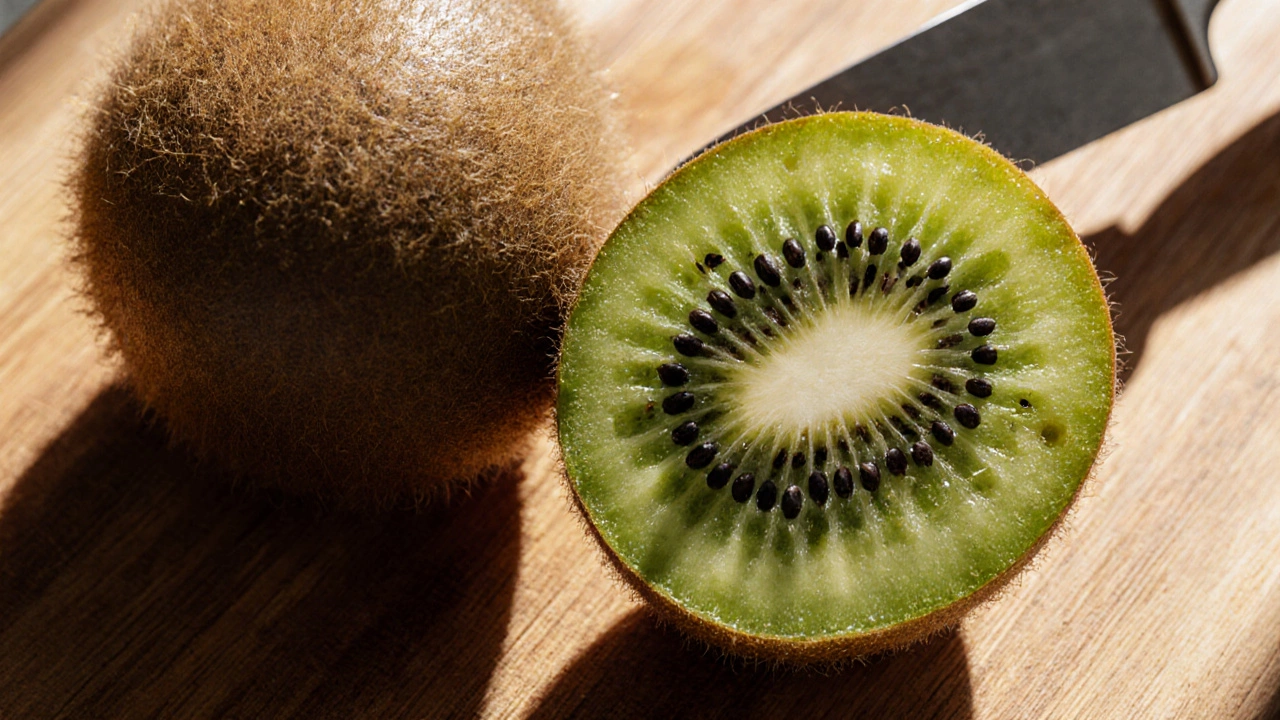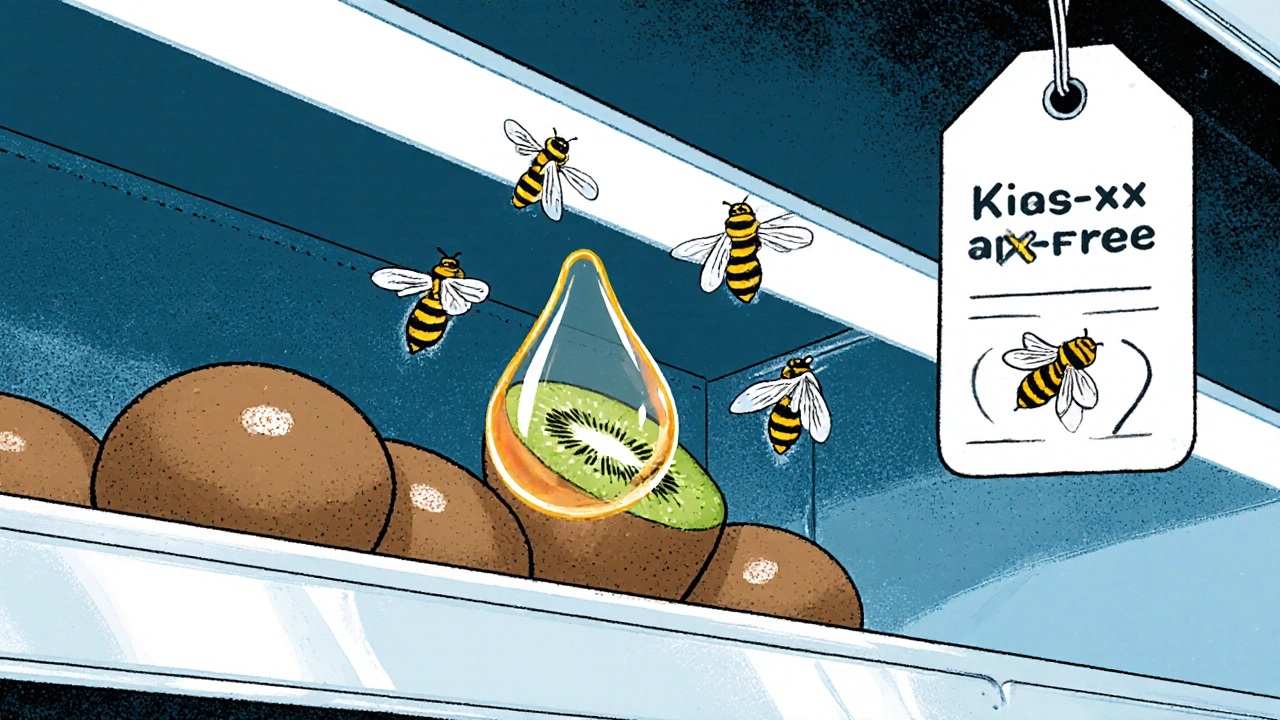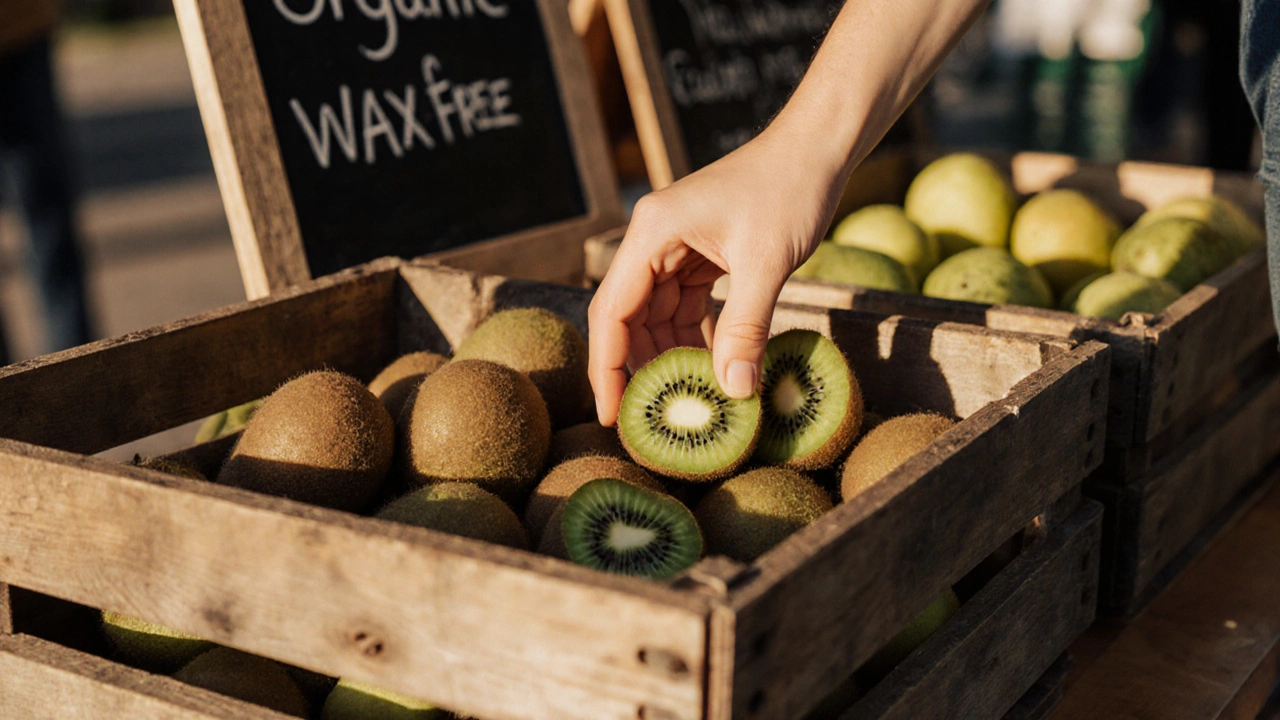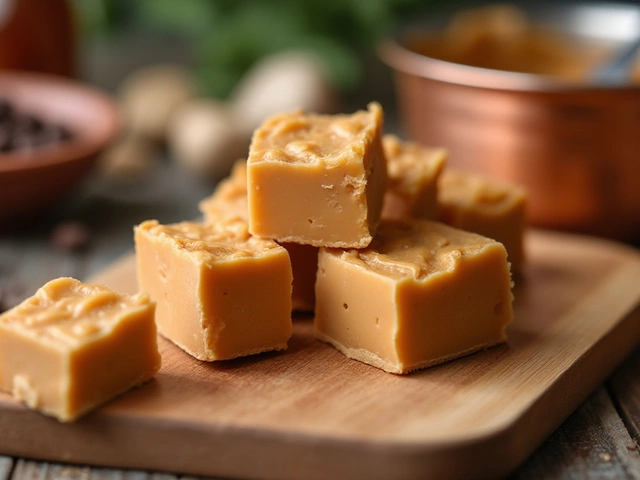
When you grab a kiwi at the supermarket, you probably think of its fuzzy skin, bright green flesh, and a sweet‑tart burst of flavor. But a growing number of vegans ask, "Kiwi not vegan?" The answer isn’t as simple as the fruit itself; it’s about how the fruit is treated after harvest.
Key Takeaways
- Fresh, uncoated kiwi is naturally vegan.
- Many retailers apply an animal‑derived wax coating to extend shelf life.
- Common animal waxes include beeswax and a natural secretion from honey‑comb bees used for its glossy finish and carnauba wax (a plant‑based wax but sometimes blended with animal products in commercial mixes).
- Look for “wax‑free” labeling or shop at markets that sell organic, unpackaged fruit.
- You can test for wax at home by rubbing the skin with a damp cloth; a sticky residue often signals a coating.
What Makes a Food Vegan?
In vegan terminology, a food is considered vegan if it contains no ingredients derived from animals and if no animal exploitation occurs during its production. This includes hidden components like gelatin, lard, or even certain food additives (substances added for preservation, texture, or appearance) that may originate from animals.
Regulatory bodies in the UK and EU require clear ingredient lists, but they don’t always mandate disclosure of processing aids such as waxes unless the wax is listed as an ingredient. That’s why many vegans rely on labeling cues like “vegetable‑wax coated” or “no animal products”.
Kiwi’s Natural Skin: A Vegan Baseline
Biologically, the kiwi (Actinidia deliciosa) is a fruit with a thin, fuzzy epidermis that protects the inner flesh. In its wild form, the skin contains natural polysaccharides, antioxidants, and a light layer of furcellaran (a seaweed‑derived gelling agent sometimes used in food processing). None of these are animal‑derived, making the raw fruit inherently vegan.
The problem begins after harvest, when the fruit is washed, sorted, and shipped across continents. To keep the kiwi looking fresh and to prevent moisture loss, many suppliers apply a thin coating.
Why Some Kiws Are Coated with Wax
Commercial fruit distributors use wax for three main reasons:
- Extend shelf life by reducing water loss.
- Improve visual appeal with a shiny finish.
- Protect against bruising during transport.
Unfortunately, the cheapest waxes on the market often come from animal sources. In the UK, a study by the Vegan Society (2023) found that 38% of pre‑packaged kiwis in major supermarkets carried a coating listed as “beeswax” or simply “wax”.
Even when a plant‑based wax like carnauba is advertised, the commercial blend can contain traces of animal‑derived emulsifiers, making strict vegans wary.

Common Animal‑Derived Coatings on Fruit
| Fruit | Typical Animal‑Derived Coating | Vegan Status (Standard Retail) |
|---|---|---|
| Kiwi | Beeswax or mixed animal/plant wax | Often non‑vegan unless labeled “wax‑free” |
| Apple | Carnauba (plant) - rarely mixed | Usually vegan |
| Orange | None (commonly untreated) | Vegan |
| Banana | None | Vegan |
| Grapes | Beeswax (occasionally) | Check packaging |
How to Identify a Vegan‑Friendly Kiwi
Here are practical steps you can take on your next grocery run:
- Read the label. Look for “wax‑free”, “no animal wax”, or “vegetable‑wax coated”.
- Choose loose fruit. Bulk bins at farmer’s markets usually sell uncoated kiwis.
- Check the country of origin. New Zealand and Chile often export kiwis with a wax coating, while UK‑grown varieties are less likely to be treated.
- Feel the skin. A sticky or overly glossy surface suggests a coating.
- Ask the staff. In specialty stores, employees often know whether their fruit is waxed.
For the most confident vegans, buying organic certified fruit provides an extra layer of assurance, as many organic standards restrict the use of animal‑derived additives.
DIY Wax Test at Home
If you’re unsure about the coating, you can run a simple test:
- Wet a clean kitchen towel with warm water.
- Rub the kiwi’s skin gently for about ten seconds.
- If the towel feels oily or leaves a visible residue, the fruit likely has a wax coating.
- Rinse the fruit under running water and pat dry before eating.
This method won’t tell you whether the wax is animal‑based, but it flags a product that may need a closer look.

When a Kiwi Is Definitely Vegan
Uncoated, freshly harvested kiwis from small farms or organic markets are your safest bet. They contain no animal‑derived ingredients, and the production process respects vegan principles by avoiding synthetic pesticides that harm pollinators.
Additionally, some brands have launched “vegan‑certified” kiwis. These products undergo third‑party verification that no animal waxes or hidden animal ingredients are used during packing.
Beyond the Kiwi: Wider Implications for Vegan Shopping
Kiwi’s wax controversy is a microcosm of a larger issue: many fruits and vegetables receive invisible animal‑derived treatments. By applying the same checklist-read labels, touch the surface, choose bulk or organic-you can extend vegan integrity to apples, cucumbers, and even leafy greens.
Being vigilant not only aligns with personal ethics but also pushes retailers toward transparent, plant‑based supply chains.
Frequently Asked Questions
Is a fresh kiwi naturally vegan?
Yes. The fruit itself contains no animal‑derived components. The vegan status depends on post‑harvest treatments like wax coating.
Do all supermarkets coat kiwis with wax?
No. Some chains sell “wax‑free” kiwis, especially in the organic or fresh‑produce sections. However, many large retailers apply a thin wax to extend shelf life.
How can I tell if a kiwi has an animal‑derived coating?
Check the ingredient list for "beeswax" or "wax". A sticky, glossy surface often indicates a coating. The home wax test (wet cloth) can also reveal the presence of any wax.
Are there vegan‑certified kiwis?
A few niche brands have earned vegan certification by proving their fruit never receives animal‑derived waxes. Look for the vegan logo on the packaging.
Can I remove wax at home?
Washing the kiwi under running water and scrubbing gently with a vegetable brush can remove most surface waxes, but it won’t change the fact that the fruit was originally coated with an animal product.





